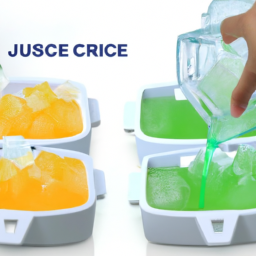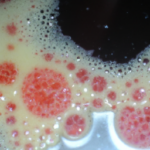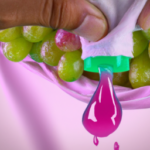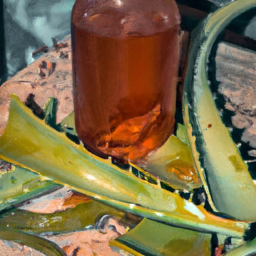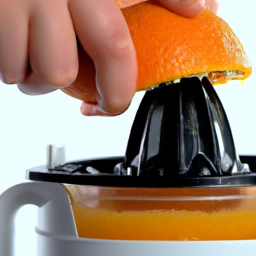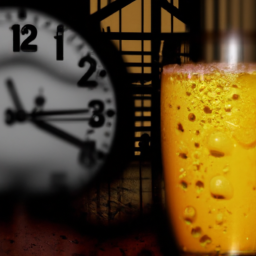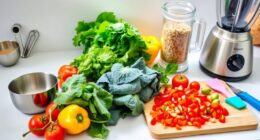As someone who loves cherries, I often find myself dealing with stains from cherry juice on my clothes. While these stains can be tough to clean, I have found some effective ways to remove cherry juice from clothing.
In this article, I will share my step-by-step process for removing cherry juice stains, so that you can save your favorite clothes from permanent damage.
First, it is important to assess the stain and determine the best course of action. Is the stain fresh or has it set in? Is it a small spot or a larger area? These factors will affect the method you use to remove the stain.
Once you have assessed the stain, the next step is to blot it with a clean cloth or paper towel to remove as much of the excess juice as possible. Then, you can move on to the next steps in the process, which I will outline in detail below.
By following these steps, you can effectively remove cherry juice stains from your clothes and save yourself from the frustration of ruined clothing.
Key Takeaways
- Assess the stain before cleaning and use appropriate cleaning methods based on fabric type, size, and severity of the stain.
- Act fast to remove stains and use natural cleaning solutions to prevent damage to fabric and skin.
- Use protective clothing like aprons or bibs to prevent future stains and treat cherry juice stains immediately to prevent them from setting in.
- Soak fabric in cold water with detergent, vinegar, or baking soda and air dry on a flat surface to fully remove the stain. Seek professional help if DIY methods are not effective.
Assess the Stain
If you’ve spilled cherry juice on your clothes, take a moment to assess the stain before proceeding with any cleaning methods. Assessing the stain is important because it can help you determine the best way to remove it.
Some stains may require a different approach from others, and blindly trying to remove the stain without assessing it first may end up making the stain worse. When assessing the stain, there are a few techniques that you can use.
First, identify the type of fabric that the stain is on, as certain fabrics may require more delicate cleaning methods. Next, take a look at the size and severity of the stain. This can help you determine how long the stain has been there and how much effort it may take to remove it.
Finally, take note of any other substances that may have been mixed with the cherry juice, as this can affect the cleaning method you choose. Common mistakes when assessing stains include not taking the time to properly examine the stain, not identifying the fabric type, and not considering any other substances that may have been mixed in with the stain.
Now that you’ve assessed the stain, it’s time to start removing it. But first, you’ll want to blot the stain to remove any excess liquid before proceeding with the cleaning method.
Blot the Stain
When dealing with a cherry juice stain on clothing, the first thing I do is grab a clean cloth and blot the stain.
This involves applying pressure to the stain with the cloth to try and absorb as much of the liquid as possible.
I repeat this process until I can’t see any more liquid being absorbed into the cloth.
Use a Clean Cloth
To effectively remove cherry juice stains from clothes, grab a clean cloth and gently blot the affected area, being careful not to rub the stain deeper into the fabric, like trying to clean a delicate painting.
Using different types of cloth can make a big difference in the effectiveness of the blotting process. Here are some tips for effective blotting:
- Use a white cloth or paper towel to avoid color transfer.
- Avoid using rough or abrasive materials that can damage the fabric, like scrubbing pads.
- Start from the outside of the stain and work your way in to prevent spreading the stain further.
- Apply a small amount of stain remover or detergent to the cloth for extra cleaning power.
- Blot with a light hand to avoid pushing the stain deeper into the fabric.
By using these tips and a clean cloth, you can effectively remove cherry juice stains from your clothes without causing further damage.
Next, we’ll move on to applying pressure to the stain for even better results.
Apply Pressure
Ready for even better results? Let’s apply some pressure to that stubborn cherry juice stain! Applying pressure to a stain can help to release the pigment from the fabric, making it easier to remove. However, it’s important to use the right techniques and tools to avoid damaging the fabric.
One way to apply pressure is to place a clean cloth over the stain and then use a spoon or the back of a knife to press down on the cloth. This will help to transfer the stain from the fabric to the cloth. However, be careful not to rub the stain as this can spread it further.
You can also try using a steam iron on a low heat setting to apply pressure and help release the stain. Just be sure to test a small, inconspicuous area of the fabric first to avoid damaging it. Keep in mind that different fabrics may require different techniques and tools to remove stains using pressure.
Now that you’ve applied pressure to the stain, it’s time to repeat the process and continue working on removing the cherry juice from your clothes.
Repeat the Process
Keep going with removing the stain by repeating the process, using the pressure technique until you see improvement. It’s important to remember that removing cherry juice stains from clothes isn’t always a one-time process. Sometimes, the stain may be too stubborn to remove on the first try. In such cases, repeating the process will help get rid of the stain completely.
Here are some alternative methods to try if the pressure technique isn’t working as expected:
- Soak the stained area with vinegar and let it sit for 10-15 minutes before washing it off.
- Apply a mixture of baking soda and water to the stained area and let it sit for 30 minutes before washing it off.
- Use a stain remover specifically designed for fruit stains.
It’s also important to avoid common mistakes that can make the stain worse. For instance, using hot water to remove the stain may set it into the fabric permanently. Also, rubbing the stained area vigorously can cause the stain to spread and become bigger.
Now that you’ve repeated the process and used alternative methods to get rid of the stain, it’s time to move on to the next step: rinsing the stain.
Rinse the Stain
Next, you gotta flush that cherry stain with cold water as soon as possible, remember, a stitch in time saves nine!
Rinse the stain under cold, running water for a few minutes, making sure that the water is penetrating through the fabric and removing as much of the stain as possible. This step is important because it’ll prevent the stain from setting in and becoming more difficult to remove later on.
After rinsing the stain, assess the damage to see if the stain’s been completely removed. If the stain still remains, don’t panic! The next step is to apply a stain remover to the affected area. But we’ll talk more about that in the next section.
Apply Stain Remover
Now it’s time to apply a stain remover to banish that pesky stain for good! Before you begin, make sure to check the label of your garment to see if there are any specific instructions for cleaning.
Here are three things to keep in mind when applying stain remover:
-
Preventive measures: If the stain is particularly stubborn, you may want to test the stain remover on a small, inconspicuous area of the garment first to make sure that it won’t cause any discoloration or damage. Additionally, if the garment is delicate or made from a special material (such as silk or wool), you may want to consider taking it to a professional cleaner instead of attempting to remove the stain yourself.
-
Alternative solutions: If you don’t have a specific stain remover on hand, you can try using a mixture of equal parts white vinegar and water. Apply the solution to the stain and let it sit for a few minutes before rinsing with cold water. You can also try using rubbing alcohol or hydrogen peroxide, but make sure to test these solutions on a small area of the garment first.
-
Apply the stain remover: Once you’ve selected a stain remover, apply it directly to the stain and let it sit for the recommended amount of time (usually a few minutes). Make sure to follow the instructions on the label carefully, as some stain removers may require you to rinse the garment before washing.
With the stain remover applied, it’s time to move on to the next step: soaking the fabric.
Soak the Fabric
Now that I’ve applied stain remover to the cherry juice stain on my clothes, it’s time to soak the fabric.
To do this, I’ll need to create a solution of water and detergent. Once I have the solution, I’ll submerge the fabric in it and allow it to soak for at least 30 minutes.
This will help to loosen and lift the stain from the fabric fibers.
Create a Solution
Mixing vinegar and baking soda can be a magical solution to remove cherry juice stains from clothes. Here’s how you can create the mixture:
- In a bowl, mix equal parts white vinegar and baking soda until you get a paste-like consistency.
- Add a few drops of dish soap to the mixture and stir well.
Apply the mixture onto the stain and let it sit for 5-10 minutes. Use a soft-bristled brush to gently scrub the stain in circular motions. Rinse the fabric with cold water and repeat the process if necessary.
Using natural cleaning solutions like vinegar and baking soda not only helps remove stains effectively, but it also has other benefits such as being environmentally friendly and non-toxic. Alternative stain removal methods like using bleach or harsh chemical cleaners can damage the fabric and may not be safe for the skin. By using natural solutions, you can ensure that your clothes are clean and safe to wear.
Now that you’ve applied the solution onto the stain, it’s time to submerge the fabric in cold water.
Submerge the Fabric
To fully remove the stain, gently submerge the fabric in cold water. This is an effective way to remove cherry juice from different fabrics. When doing this, make sure to use cold water, as hot water can set the stain permanently.
Before submerging the fabric, there are some tips for preventing cherry juice stains. First, consider wearing an apron while eating or drinking cherry juice. This’ll prevent any spills from getting on your clothes in the first place. Additionally, if a spill does occur, try to treat it as soon as possible. The longer the stain sits, the harder it’ll be to remove.
By following these tips and submerging the fabric in cold water, you can effectively remove cherry juice stains.
To allow the fabric to soak, simply leave it in the cold water for at least 30 minutes. This will give the water time to penetrate the fibers of the fabric and lift the stain out.
After the fabric has soaked, you can move on to the next step of the stain removal process.
Allow the Fabric to Soak
Simply soak the fabric in cold water for at least 30 minutes to allow the stain to be lifted out, using the power of penetration and patience. Soaking the fabric is a crucial step in removing cherry juice stains as it helps to loosen up the fibers and break down the stain.
Here are some benefits of soaking fabric and best practices for soaking clothes:
- Soaking helps to dissolve the stain: Soaking the fabric in cold water helps to dissolve the cherry juice stain, making it easier to remove it during the washing process.
- It prevents the stain from setting: By soaking the fabric immediately after the stain occurs, you prevent the cherry juice from setting in the fibers of the fabric, making it easier to remove.
- It is gentle on the fabric: Soaking the fabric is a gentle way of removing stains, especially for delicate fabrics that can’t withstand harsh cleaning methods.
Best practices for soaking clothes include using cold water and avoiding hot water, as it can set the stain. Also, avoid using bleach or strong detergents as they can damage the fabric.
Once you’ve allowed the fabric to soak for at least 30 minutes, it’s time to wash the fabric to remove any remaining stain particles.
Wash the Fabric
First, you’ll want to grab some cold water and gently blot the cherry stain on your clothes. This will help to remove any excess juice and prevent the stain from setting further into the fabric.
After blotting, you can move onto washing the fabric. When washing the fabric, it’s important to follow the care instructions on the label. If the fabric is machine washable, use a laundry detergent that’s designed to remove tough stains. For fabrics that aren’t machine washable, consider using alternative cleaning methods, such as hand washing with a gentle soap or taking the fabric to a professional cleaner.
Once the fabric has been washed, the next step is to dry it properly. To dry the fabric, simply lay it flat on a clean towel and allow it to air dry. Avoid using a dryer, as this can cause the stain to set further into the fabric.
By following these preventative measures and alternative cleaning methods, you can successfully remove cherry juice stains from your clothes and ensure that your fabric remains in good condition.
Dry the Fabric
Once the fabric has been washed, it’s time to lay it flat on a clean towel and allow it to air dry properly. This step is crucial in preventing the cherry juice stain from setting further into the fabric.
Avoid using the clothes dryer as the heat can cause the stain to become permanent. Instead, let the fabric dry naturally by placing it on a flat surface in a well-ventilated area. If you’re in a hurry, you can speed up the drying process by using an iron on a low heat setting or a hairdryer on a cool setting. However, be sure to keep the iron moving constantly to prevent scorching or melting of the fabric.
Another alternative is to use fabric softener or vinegar in the rinse cycle when washing the garment to help remove the stain. Once the fabric has dried, check to see if the stain is still present. If it is, repeat the process until the stain has been completely removed.
Repeat the Process
So, if the cherry juice stain persists after the first round of cleaning, don’t panic. It’s not uncommon for stubborn stains to take a few tries to remove completely.
The key here is to try different methods until you find the one that works best for your particular fabric. Just be patient and keep repeating the process until the stain is gone.
If the Stain Persists
If the stain just won’t budge, don’t fret – there are still a few tricks up your sleeve to get that cherry juice out of your clothes.
First, try using a stain remover specifically designed for fruit stains. These products can be found at your local grocery or home goods store and are often labeled as ‘fruit stain removers.’ Simply apply the product to the stain and let it sit for the recommended amount of time before washing the garment as usual.
Another alternative method to remove cherry stains is to use white vinegar. Mix equal parts vinegar and water and apply the solution to the stain. Let it sit for a few minutes before washing the garment in the washing machine.
Finally, if all else fails, consider taking the garment to a professional dry cleaner. They may have access to specialized equipment and treatments that can remove even the toughest of cherry stains.
With these tricks, you should be able to remove even the most stubborn cherry stains from your clothes and get them looking as good as new.
Now, let’s move on to the next section and try a different method to tackle this pesky problem.
Try a Different Method
Don’t give up just yet, there’s a different approach you can take to tackle those stubborn stains. If the previous methods didn’t work, it’s time to try a different technique.
One alternative solution is to create a mixture of vinegar and baking soda and apply it directly to the stain. Let the mixture sit for about 30 minutes before washing the garment in cold water. This method should help to lift the stain and remove any residual color from the fabric.
Another option is to use a commercial stain remover that is specifically designed for fruit stains. These products can be found at most grocery or department stores and should be applied according to the manufacturer’s instructions. It’s important to test the product on a small, inconspicuous area of the fabric before using it on the entire stain to ensure that it won’t cause any damage or discoloration.
Remember, different techniques and alternative solutions may work better for different types of stains. Be patient and persistent in your efforts to remove the cherry juice stain from your clothes.
Be Patient
I’ve tried a few different methods to get cherry juice out of my clothes, but sometimes it just takes a little more time and patience. It can be frustrating when the stain doesn’t come out right away, but I’ve learned to practice mindfulness and remind myself that it’s not the end of the world.
One thing I like to do is use natural remedies like vinegar or lemon juice to help lift the stain. I’ll mix a little bit with water and apply it to the affected area, then let it sit for a while before washing it as usual. It may take a few tries, but eventually the stain will start to fade. It’s important to be patient and not give up after the first attempt.
As much as I try to handle stains on my own, sometimes it’s just not possible and I need to seek professional help. In the next section, I’ll go over some options for when DIY methods aren’t cutting it.
Seek Professional Help
You might want to consider calling in the big guns and seeking professional help to rid your clothes of that stubborn cherry juice stain. While DIY alternatives can work in some cases, sometimes the stain is just too ingrained in the fabric to remove completely without damaging the material.
Professional cleaning services have the expertise, equipment, and specialized products to tackle even the toughest stains, leaving your clothes looking as good as new.
When choosing a professional cleaning service, make sure to do your research and find a reputable company that specializes in stain removal. It’s also important to act fast and bring in your stained clothing as soon as possible, as the longer the stain sets in, the more difficult it will be to remove.
With the help of professional cleaners, you can say goodbye to that pesky cherry juice stain and enjoy your clothes once again.
To prevent future stains, it’s important to be mindful when eating or drinking anything that could potentially cause a stain. Consider wearing an apron or bib while cooking or eating messy foods, and always keep stain removal products on hand for quick and easy clean-up.
By taking these preventative measures, you can avoid the hassle and expense of dealing with stubborn stains in the future.
Prevent Future Stains
To prevent future stains, I always make sure to be careful when eating and drinking. I try to avoid wearing my favorite clothes when I know there’s a high chance of getting stains.
Additionally, I use protective clothing like aprons or bibs when cooking or eating messy foods. Lastly, I treat stains immediately by blotting them with a cloth or paper towel and applying a stain remover before it sets in.
With these precautions, I can minimize the chances of ruining my clothes with stubborn stains.
Be Careful When Eating and Drinking
Careful now, when munching on those juicy cherries or sipping on cherry juice, as it can easily stain your clothes! To prevent future stains, it’s important to be mindful when eating and drinking.
Here are some tips to keep in mind:
- Firstly, take small bites or sips and chew slowly, as this will help you stay alert and avoid spills.
- Secondly, try to avoid eating or drinking while walking or doing other activities, as this can increase the chances of accidents.
- Finally, always keep napkins or paper towels on hand to quickly clean up any spills or drips.
By being mindful while eating and drinking, you can significantly reduce the risk of spills and stains on your clothes. However, accidents can still happen, so it’s always a good idea to use protective clothing, such as an apron or bib, when consuming food or beverages that are known to stain.
Use Protective Clothing
Wearing protective clothing like an apron or bib can save your favorite outfit from ruin due to food stains. It’s easy to get carried away when eating, and before you know it, a splash of cherry juice could land on your shirt or pants. That’s why it’s important to wear gloves and use aprons or bibs when dining to prevent stains from setting in.
In case of any spills, pre-treat the affected area with vinegar or baking soda to help lift the stain. These are effective stain removal techniques that you can use before washing the garment. By taking these extra precautions, you’re not only saving yourself from the trouble of having to deal with stubborn stains, but also prolonging the life of your clothes.
With that said, it’s still important to treat stains immediately to prevent them from setting in further.
Treat Stains Immediately
As soon as a stain appears on your clothing, don’t hesitate to treat it with vinegar or baking soda to prevent it from setting in and ruining your outfit. This is especially important when dealing with cherry juice stains, which can be notoriously difficult to remove once they’ve set in. By taking quick action, you can prevent the stain from spreading and minimize the damage to your clothing.
In order to emphasize the importance of preventing stains and taking quick action, I’ve created a table below that outlines the different methods for treating cherry juice stains based on how long they’ve been on the clothing. As you can see, the longer you wait to treat the stain, the more difficult it becomes to remove. By following these guidelines and treating cherry juice stains immediately, you can increase your chances of successfully removing the stain and saving your clothing.
| Time Elapsed | Treatment Method |
|---|---|
| 0-5 minutes | Rinse with cold water, apply vinegar or baking soda |
| 5-30 minutes | Soak in cold water with detergent, then apply vinegar or baking soda |
| 30 minutes-4 hours | Soak in cold water with stain remover, then apply vinegar or baking soda |
| 4 hours or more | Soak in warm water with bleach or hydrogen peroxide, then apply vinegar or baking soda |
Frequently Asked Questions
Can I use bleach to remove cherry juice stains from clothes?
I wouldn’t recommend using bleach to remove cherry juice stains from clothes. There are alternatives to bleach that are less harsh and won’t damage the fabric. Pre treating techniques like using vinegar or baking soda can be effective.
Is it safe to use hot water to rinse out cherry juice stains?
I find that using cold water is best for stain removal, as hot water can set the stain. Before washing, I pre-treat cherry juice stains with dish soap. This method has been effective for me.
Will using a dryer on high heat help to remove cherry juice stains?
Using high heat in a dryer is not an effective method to remove cherry juice stains from clothes. It can actually set the stain further and make it more difficult to remove. Alternative stain removal techniques, such as using vinegar or dish soap, may be more successful.
Can I use vinegar as a natural stain remover for cherry juice stains?
Using vinegar as a natural stain remover has several benefits, including its ability to break down tough stains like cherry juice. Other natural stain removers for cherry juice stains include lemon juice, baking soda, and hydrogen peroxide.
What should I do if the cherry juice stain has already set in?
I’m afraid there’s no easy fix for a set-in cherry juice stain. Prevention tips include treating the stain as soon as possible and avoiding heat. Alternative stain removal methods may include using hydrogen peroxide or a commercial enzyme-based cleaner.
Conclusion
Well, it happened again. I was enjoying a nice glass of cherry juice, and before I knew it, I had spilled some on my new shirt. Thankfully, I knew exactly what to do to get the stain out.
First, I assessed the stain and determined that it was a fresh spill. Then, I quickly grabbed a cloth and began blotting the stain to remove as much juice as possible.
Next, I rinsed the fabric with cold water and applied a stain remover. After letting the remover sit for a few minutes, I soaked the fabric in cold water for a few hours before drying it.
Luckily, the stain was completely gone, and my shirt looked good as new. With these steps, you too can easily remove cherry juice stains from your clothes and prevent future mishaps.
Ilana has been a vegan for over 10 years. She originally made the switch for health reasons, but soon found herself becoming more and more passionate about the ethical and environmental implications of a vegan lifestyle. Ilana is the author of The Graceful Kitchen, a blog all about veganism. She loves to cook up delicious and nutritious vegan meals, and share her recipes with others who are interested in leading a cruelty-free life. Ilana is also a strong advocate for using whole foods as the foundation of a healthy diet, and believes that going vegan is one of the best ways to achieve this.

